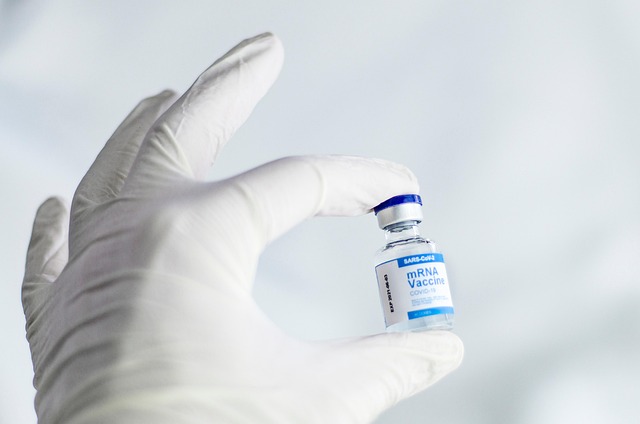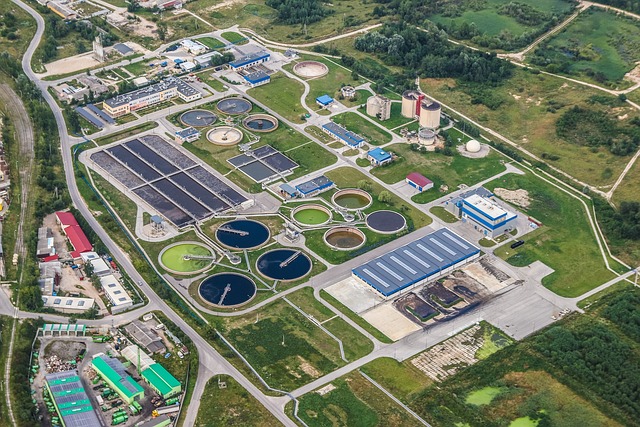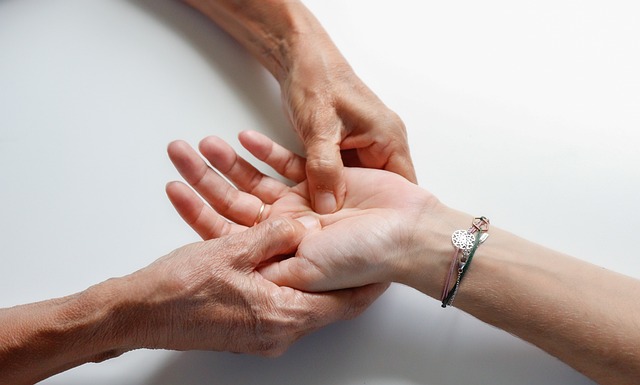Complex PTSD, a severe form of Post-Traumatic Stress Disorder, arises from prolonged trauma exposure, manifesting in diverse symptoms that significantly impact daily life. Effective treatments like EMDR, CPT, and CBT offer coping strategies through therapies like exposure, cognitive reframing, and bilateral stimulation to reduce symptoms and promote recovery. Group therapy, support networks, and alternative approaches like art and music therapy complement traditional care. Building resilience through techniques like mindfulness and relaxation enhances long-term mental health for complex PTSD management.
Complex Post-Traumatic Stress Disorder (CPTSD) is a profound mental health condition with distinct symptoms compared to traditional PTSD. This article delves into understanding CPTSD, its causes, and unique therapeutic approaches for effective treatment. From traditional therapies like cognitive behavioral therapy (CBT) and eye movement desensitization and reprocessing (EMDR), to alternative methods such as art therapy and group support, this guide explores evidence-based strategies for healing. Discover how building resilience and coping mechanisms can empower individuals on their journey towards recovery from PTSD treatment.
Understanding Complex PTSD: Symptoms and Causes

Complex PTSD, or Post-Traumatic Stress Disorder, is a severe condition that can arise from prolonged or repeated exposure to traumatic events. Unlike its more common counterpart, simple PTSD, complex PTSD often involves a range of distressing symptoms that impact an individual’s daily functioning and relationships. These symptoms can include re-living the trauma through intrusive memories, nightmares, or flashbacks; avoidance of situations or people associated with the trauma; negative changes in beliefs and feelings about oneself and others; and heightened emotional arousal, such as irritability or difficulty regulating emotions.
Several factors contribute to the development of complex PTSD. These include genetic predisposition, early childhood trauma, chronic stress, and social support (or lack thereof). In many cases, individuals who have experienced repeated or prolonged traumatic events, like domestic violence, child abuse, war, or natural disasters, are at a higher risk of developing complex PTSD. Access to effective PTSD treatment is crucial for managing these symptoms and facilitating recovery. Through specialized therapies, such as eye movement desensitization and reprocessing (EMDR) and cognitive processing therapy (CPT), individuals can learn coping strategies to manage their symptoms and rebuild a sense of control and well-being.
Traditional Therapy Approaches for PTSD

Traditional therapy approaches for PTSD often include exposure therapy, cognitive processing therapy (CPT), and eye movement desensitization and reprocessing (EMDR). These methods help individuals confront and process traumatic memories in a safe environment. Exposure therapy gradually exposes patients to reminders of their trauma, allowing them to face and manage their fears. CPT focuses on challenging negative thoughts and beliefs associated with the trauma, while EMDR combines exposure with bilateral stimulation, such as side-to-side eye movements or tones, to help individuals process traumatic memories. These therapies are designed to reduce symptoms like flashbacks, nightmares, and avoidance behaviors, offering a path towards healing for those suffering from complex PTSD.
Evidence-Based Treatments for Complex PTSD

Evidence-based treatments have proven effective in managing complex PTSD, offering individuals coping strategies and a path to recovery. Cognitive Processing Therapy (CPT) is one such approach, focusing on helping patients identify and challenge negative thoughts and beliefs associated with traumatic events. This structured therapy enables folks to process and reframe memories, reducing the power they hold over their lives. Another influential method is Eye Movement Desensitization and Reprocessing (EMDR), which facilitates the resolution of distressing memories through bilateral stimulation, such as side-to-side eye movements.
These therapies have shown remarkable results in helping individuals regain control and lead fulfilling lives. PTSD treatment often involves a combination of these evidence-based methods tailored to each person’s unique needs, ensuring a comprehensive approach to healing.
Cognitive Behavioral Therapy (CBT) for Healing

Cognitive Behavioral Therapy (CBT) is a well-established and effective approach for PTSD treatment. By focusing on identifying and changing negative thought patterns and behaviors, CBT helps individuals challenge and reframe their distressing memories and beliefs related to traumatic events. This therapy encourages patients to confront and process these memories in a safe and controlled manner, reducing the intensity of associated symptoms like flashbacks, nightmares, and avoidance behaviors.
Through structured sessions, CBT enables individuals to develop coping strategies and gain insights into their trauma responses. It empowers them to manage symptoms, improve emotional regulation, and enhance overall well-being. This evidence-based method has shown remarkable success in helping people with complex PTSD heal and rebuild their lives by providing them with the tools to navigate and overcome the challenges posed by traumatic experiences.
Eye Movement Desensitization and Reprocessing (EMDR) Technique

Eye Movement Desensitization and Reprocessing (EMDR) is a highly effective therapy for Complex Post-Traumatic Stress Disorder (PTSD). This innovative approach was developed to help individuals process traumatic memories and reduce their distressing symptoms. During EMDR sessions, patients focus on traumatic events while simultaneously engaging in bilateral stimulation, typically through side-to-side eye movements, taps, or tones. This process facilitates the brain’s natural healing mechanisms, allowing individuals to reprocess traumatic memories and gain a new perspective on the event.
EMDR therapy is unique as it aims to desensitize patients to distressing memories while also enhancing their positive associations related to the trauma. Through this dual focus, EMDR helps individuals integrate their traumatic experiences into their overall life story, reducing the powerful hold that these memories have over them. As a result, PTSD symptoms such as flashbacks, nightmares, and intense emotional reactions can significantly diminish, allowing for improved quality of life.
Group Therapy and Support Networks

Group therapy is a powerful component in the PTSD treatment arsenal, offering individuals affected by complex post-traumatic stress disorder (PTSD) a unique and supportive environment. In this setting, people share their experiences, fostering a sense of community and understanding. This approach leverages the power of collective healing, where participants learn from one another’s journeys and develop coping strategies collectively. Group therapy sessions often encourage open dialogue, allowing individuals to express their feelings in a safe and non-judgmental space, which is particularly beneficial for those dealing with the internalized trauma associated with PTSD.
Support networks are intricately linked to successful PTSD treatment, providing individuals with ongoing emotional backing. These networks can include family, friends, or support groups specifically tailored for those with PTSD. Having a strong support system helps individuals navigate the challenges of therapy and promotes better mental health outcomes. Through these connections, people affected by PTSD gain access to practical assistance, emotional comfort, and a sense of belonging, all of which are vital components in the healing process.
Alternative Therapies: Art, Music, and Animal-Assisted Therapy

In the quest for effective PTSD treatment, alternative therapies offer a promising avenue for those navigating complex post-traumatic stress disorder. Art therapy, music therapy, and animal-assisted therapy are innovative approaches gaining recognition in mental health circles. These methods utilize creative expression, auditory stimulation, and the unique bond between humans and animals, respectively, to facilitate healing.
Art and music therapies provide a means of non-verbal communication, allowing individuals to express their experiences and emotions through painting, drawing, or music composition. Animal-assisted therapy, on the other hand, involves interacting with trained animals to foster trust, empathy, and social skills, which can significantly benefit those struggling with social anxiety often associated with PTSD treatment. These alternative approaches complement traditional therapies, offering a holistic perspective that addresses the multifaceted nature of complex PTSD.
Building Resilience and Coping Strategies

Building resilience is a key aspect of therapy for complex PTSD, helping individuals develop effective coping strategies to manage symptoms and improve their overall well-being. Through various therapeutic approaches, such as cognitive processing therapy (CPT) or eye movement desensitization and reprocessing (EMDR), patients learn to reframe traumatic memories, reducing their impact and associated distress. This process empowers them to face challenges with newfound strength and adaptability.
Coping strategies play a vital role in PTSD treatment, equipping individuals with tools to navigate triggers, manage anxiety, and regulate emotions effectively. Techniques like mindfulness meditation, progressive muscle relaxation, and exposure therapy teach individuals to respond to stressors calmly, fostering a sense of control over their reactions. By integrating these strategies into daily life, patients can enhance their ability to cope with PTSD symptoms, leading to improved mental health and increased resilience in the long term.
